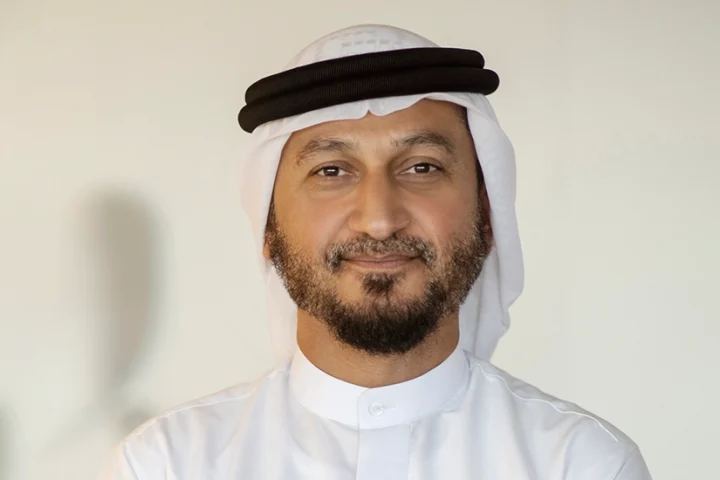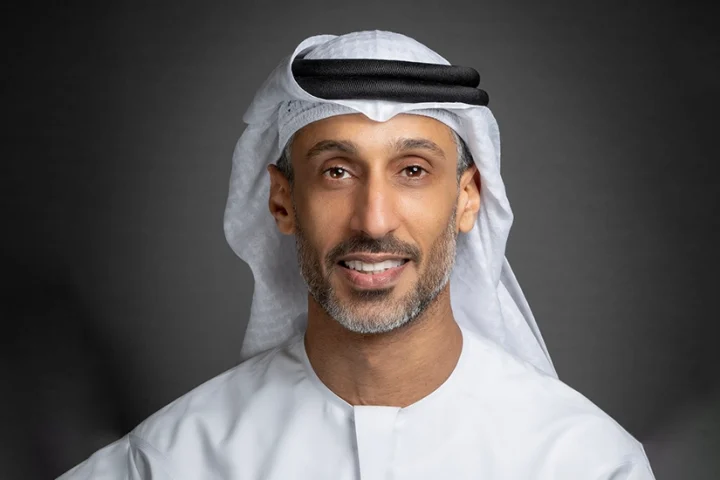There is no argument, healthcare is changing and changing rapidly. As a result the underlying platform for the delivery of digitized healthcare needs to stay one step ahead. Healthcare delivery organizations (HDOs) need to use a modular architecture designed specifically for healthcare that builds on the collective set of best practices from both an infrastructure and business objective perspective.
- The internet of things (IoT) is rapidly gaining momentum within the healthcare industry of the Gulf Cooperation Council (GCC) countries, according to IDC Health Insights. What is your perception of the IoT impact on the healthcare landscape? How connected are the services and solutions?
The IoT plays a significant role in a broad range of healthcare applications resulting in cost-effective, high-quality care. The IoT is slowly starting to weave into healthcare on both the doctor and patient fronts. Ultrasounds, thermometers, glucose monitors, electrocardiograms, and more are all starting to become connected and letting patients track their health. There is no doubt that the Internet of Things is transforming the healthcare industry completely by redefining how apps, devices and people interact and connect with each other in delivering healthcare solutions. That is, IoT is constantly offering new tools as well as efficiencies that make up an integrated healthcare system with the view of ensuring patients are cared for better, health care costs are reduced significantly and treatment outcomes are improved.
The potential for IoT in healthcare exists way beyond traditional environments. There are already many examples of IoT-based implementations for the home and the mobile individual which integrate with hospital based systems. These help people with specific conditions, or who are at risk (such as older people or those with mental health conditions), to be monitored and helped outside of the hospital system.
- What are the various solutions that you have for the healthcare sector?
As a worldwide leader in networking, Cisco is well positioned to help improve the future of healthcare through networked technologies that transform how people connect, access and share information, and collaborate. Cisco technologies can benefit all stakeholders, from patients to medical providers, payers, and life sciences organizations.
Cisco Connected Health solutions enable care team collaboration and business efficiency while promoting a higher quality of care. Cisco helps simplify healthcare communications using a network of interoperable technologies that better connect patients with medical providers, payers, and life science organizations. Cisco solutions link critical information, people, and knowledge to help improve the healthcare experience. Our vision is a Connected Health ecosystem that helps to shape a world of health without boundaries.
We have already seen strong success in the region with the Jordan Healthcare Initiative. The Jordanian government and Cisco collaborated to create a “telehealth” network that connects rural patients to specialist physicians at an urban hospital. Through Cisco’s HealthPresence™ solution, patients at rural Al Mafraq Governmental Hospital can see specialist physicians at Prince Hamzah Hospital in Amman, the Jordanian capital. By using information and communications technology (ICT), the Jordan Healthcare Initiative has the potential to improve healthcare for all Jordanians and provide equal access for rural citizens.
Connected Health is Cisco’s vision of a healthcare ecosystem that facilitates communications among staff and clinicians so they can collaborate more closely and connect with patients and family members to improve the quality of care.
Healthcare professionals are increasingly looking for networking solutions that ease the tangle of systems and devices. The Cisco® Medical-Grade Network framework is optimized for healthcare environments and provides a foundation for connecting healthcare ecosystems. Above all, the Cisco Medical-Grade Network is designed to be resilient, protected, responsive, and interactive—providing a robust foundation for the following solutions.
- Streamline workflows and improve communication among clinicians withCisco Clinical Workflow Solutions.
- Enable security, reliability, and regulatory compliance withCisco Healthcare Technology Foundations.
- Optimize imaging workflow and image access withCisco Connected Imaging Solutions.
- Enable clinical care unbounded by distance, physical location or setting withCisco Care-at-a-Distance Solutions.
- Reduce capital and operating expenses of hospital facilities withCisco Smart Healthcare Facility Solutions.
Encouragingly, the Middle East and Africa (MEA) is ideally placed to tap into this new era of visual empowerment as revealed in the 11th annual Cisco Visual Networking Index™ (VNI) Complete Forecast for 2015 to 2020 – the global IP traffic will nearly triple at a compound annual growth rate (CAGR) of 22% over the next five years. The MEA region will see a 6-fold growth in IP traffic, which is the highest at a CAGR of 41% by 2020. Internet video will account for 79%of global Internet traffic by 2020—up from 63% in 2015. Similarly, IP video traffic will grow will grow 8-fold from 2015 to 2020, a compound annual growth rate of 52% which means that for MEA 169 billion minutes (321,793 years) of video content will cross the Internet each month in 2020. That’s 64,359 minutes of video streamed or downloaded every second.
- Integrating devices and device data into care delivery processes will remain a niche activity. How do you see wearable playing a key role in redefining healthcare?
Wearable technology is an industry that continues to grow and adapt to meet the ever-changing needs of our world. Many health- and fitness-related technologies have multiple applications and encourage wearers to be more engaged in their own fitness, help modify behaviour by reminding wearers to exercise or take medication. They also provide a platform for patients and healthcare professionals to share data and collaborate on health strategies. Indeed, wearable technologies geared towards patient engagement and helping patients and consumers to stay healthy and fit, have the potential to support the ambition of Middle East governments to improve the health of their countries.
Importantly, wearable technology puts a patient’s real-time personal health data in their own hands. Ten or 15 years ago, patients relied solely on a doctor’s professional opinion for feedback on treatment and health. Now, patients can monitor their own health from home or on the go. They can educate themselves and make decisions on issues that affect their overall health and wellness.
The confluence of Big Data and small medical devices is rapidly transforming the world of medicine. The proliferation of sensors – from Apple watches and Fitbit wrist bands to home glucometers and blood pressure cuffs – give consumers instant access to personal measures of well-being. Instant information changes expectations and redefines what’s possible. Traditional boundaries in care and delivery are disappearing. As IoT transforms healthcare, providers must innovate in order to remain competitive.
- How does 2020 healthcare landscape look like?
According to Global Smart Healthcare Market 2016-2020 report by Research and Markets the global smart healthcare market will grow at a CAGR of 24.55% during the period 2016-2020. We believe that the healthcare industry will see the adoption of technology which will eliminate geographical constraints to help people receive timely medical care no matter where they are. Remote consultation platforms (video and audio) and remote monitoring (wearable sensors and mobile phone apps that track chronic disease symptoms) will become increasingly common.
The healthcare industry has traditionally trailed other sectors in the use of Big Data, in part due to concerns about how patient confidentiality can safeguarded. A key benefit is the ability to collect and analyze information from multiple sources, given that a single patient’s data may come from various physicians, hospitals and laboratories. Today, healthcare providers are tapping into the wealth of databases of information available to identify problems before they occur, for example, by predicting epidemics and avoiding preventable deaths. This trend will continue to grow as healthcare providers realize the value generated from understanding as much about patients as possible and as early on in their lives as possible, to enable early stage treatment. As models of treatment delivery are continue to evolve, more and more of the decisions taken by healthcare providers will be driven by data.
- What would be the key challenges for CIOs in healthcare this year? What would be your advice to them?
Below are some of the key challenges that we at Cisco believe will need to be addressed by CIOs in healthcare:
- Security: According to a report by Grand View Research the global healthcare cybersecurity market size is expected to reach nearly USD10.85 billion by 2022. Healthcare is so poorly protected compared to other industries and ranks close to the bottom in information security spend but we believe without a doubt that security will be the number 1 priority for all CIOs. As we know data breaches occur all the time, and that data security to ensure compliance is a top priority. This increased pressure is an inevitable corollary of making files easier to access through digitisation, and of stringent new rules that require information be both shared with more people on demand, but also be protected from unauthorised access.
- Big Data/Analytics: CIOs are being challenged to provide actionable data to healthcare management in order to be able to make informed business decisions. In the past, servicing these requests from internal customers has been a largely manual process. But with digitization comes the promise of analytics to help automate, accelerate and scale the delivery of business intelligence. This challenge requires mature data-handling processes and thoughtful data governance. CIOs need to gain consensus from their peers in the organization on priorities for analytics before an analytics program can provide value.
- Mobility and Data Access: As hospital staff go about their day-to-day activities, they use a wide variety of IT devices in patient care. Their interaction with technology affects their workflow, and workflow affects both patient outcomes and hospital productivity and profitability. The ability to streamline, simplify and speed access to critical information while delivering a consistent experience across devices and workstations ensures that technology will enhance rather than hinder patient care.
- Data Interoperability: CIOs continue to deal with interfacing systems together; applications are aging and application counts are increasing due to new business requests and merger activities while old applications are rarely taken out of production. We believe that one of the main challenges that CIOs will face is to take a serious look are their application portfolio.
- Imaging: Radiology and many other specialties generate increasingly-large volumes of image data due to growing image file sizes and more image slices per study. At the same time, the list of medical specialties using images in the course of providing care is growing. This is leading top CIOs to investigate a new imaging concept called “enterprise imaging strategy.” The goals of such a strategy are to rationalize image libraries and reduce unnecessary, repeat studies by presenting images in the context of patient records.



















